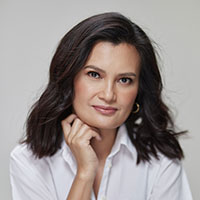I HAD the pleasure of having a taped, long conversation with Dr. Sylvia Earle, world-renowned marine biologist, oceanographer, explorer and the first woman chief scientist of the US National Oceanic and Atmospheric Administration in her recent visit to the Philippines. She was a guest of the Department of Environment and Natural Resources (DENR) upon the invitation of Secretary Toni Yulo-Loyzaga. She was one of the pioneers to use the modern self-contained underwater breathing apparatus (scuba) and helped develop deep-sea submersibles for explorations in uncharted seas. Dr. Earle plays a leading role in establishing marine protected areas (MPA) by declaring them as "Hope Spots."
Dr. Earle, 88, was in the Philippines to dive in and explore the Verde Island Passage (VIP) with the DENR's Biodiversity Management Bureau, Coastal and Marine Division. The VIP is one of the most biologically diverse waters on Earth, serving as a habitat for over 1,700 marine species, including 60 percent of the world's shore fish and 300 coral species. The VIP is considered by scientists to be the center of marine shorefish biodiversity in the world. As important as it is to the marine ecological balance, it also serves as a passage for commercial vessels and passenger ferries, hosting other important activities such as fishing and ecotourism. The VIP is a major source of livelihood, a lifeline to many residents nearby.
Continue reading with one of these options:
Ad-free access
P 80 per month
(billed annually at P 960)
- Unlimited ad-free access to website articles
- Limited offer: Subscribe today and get digital edition access for free (accessible with up to 3 devices)


